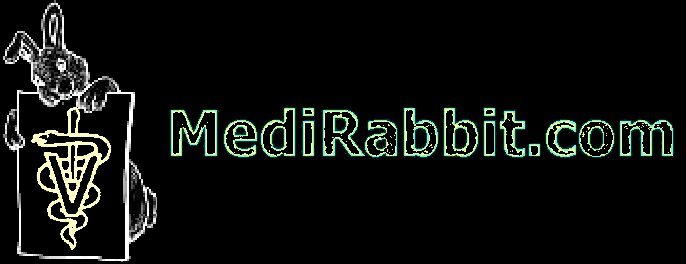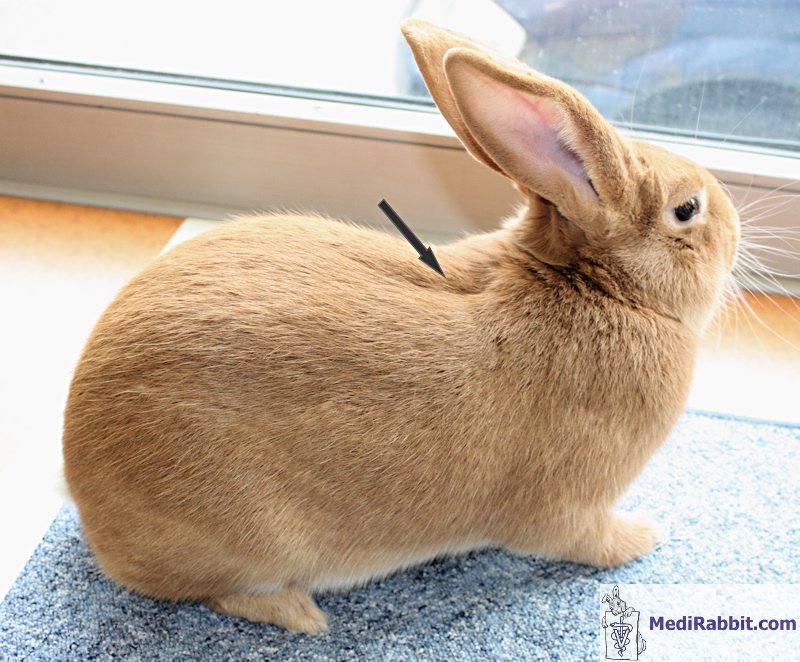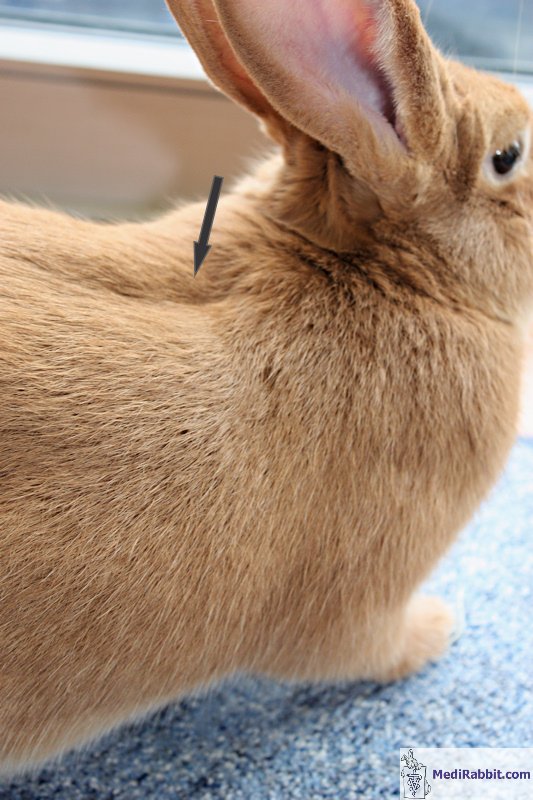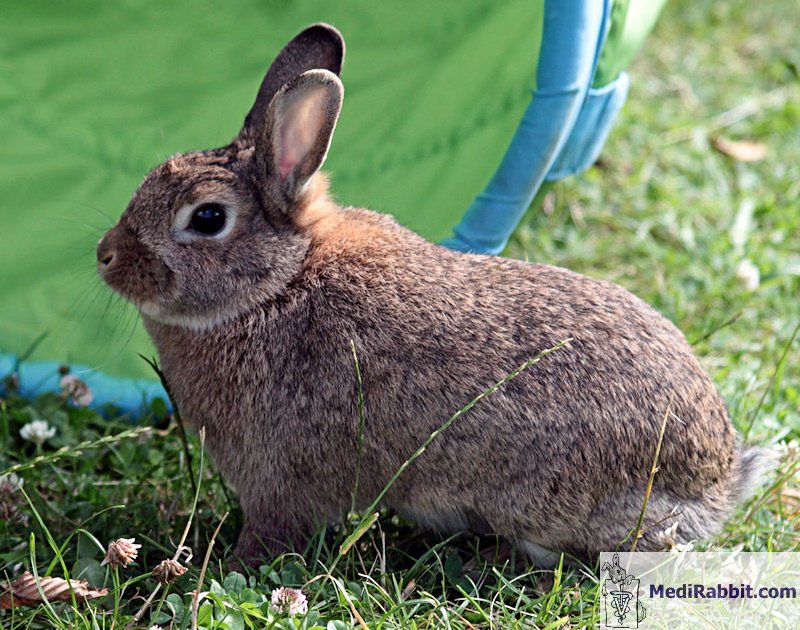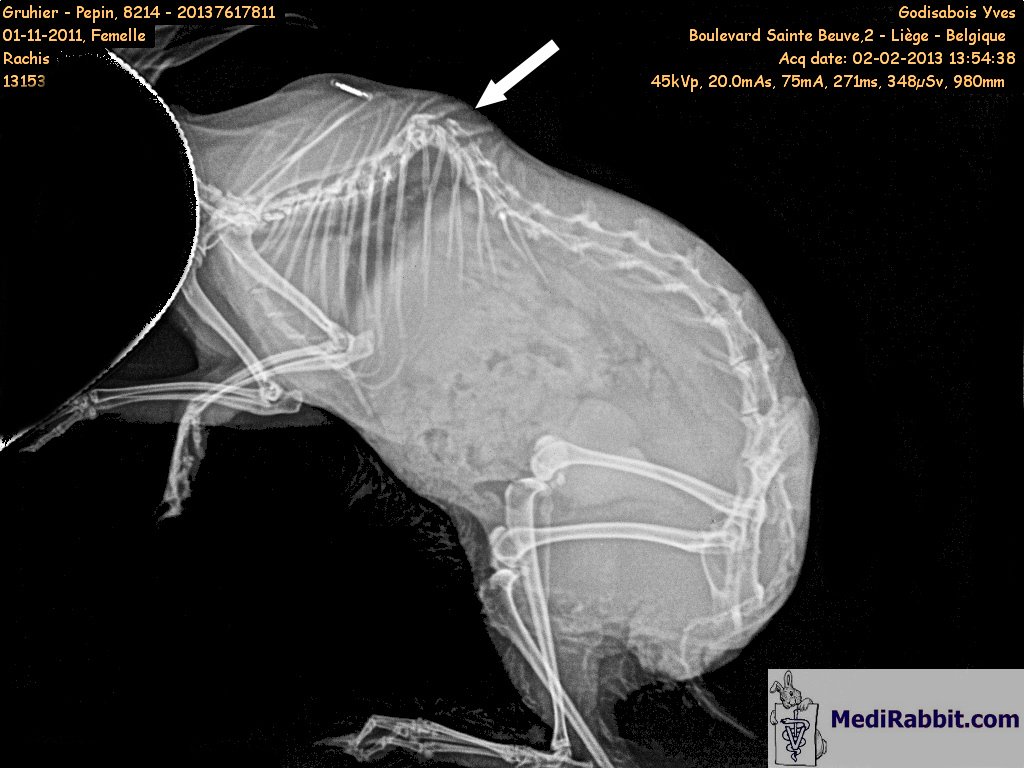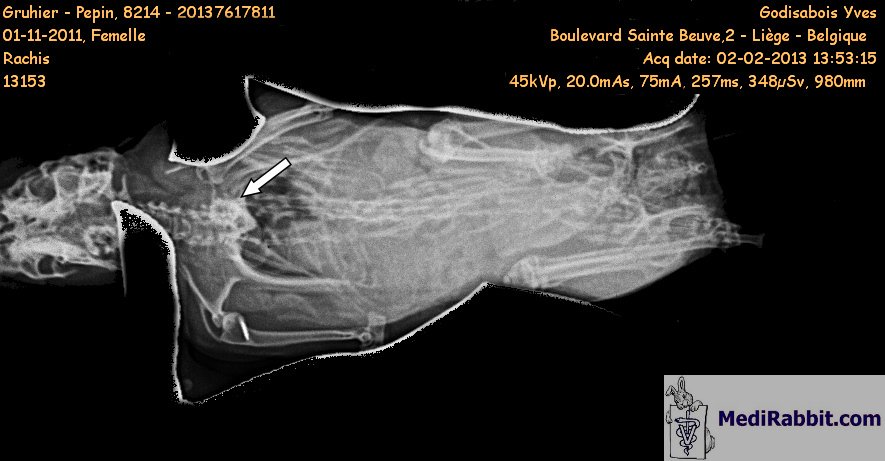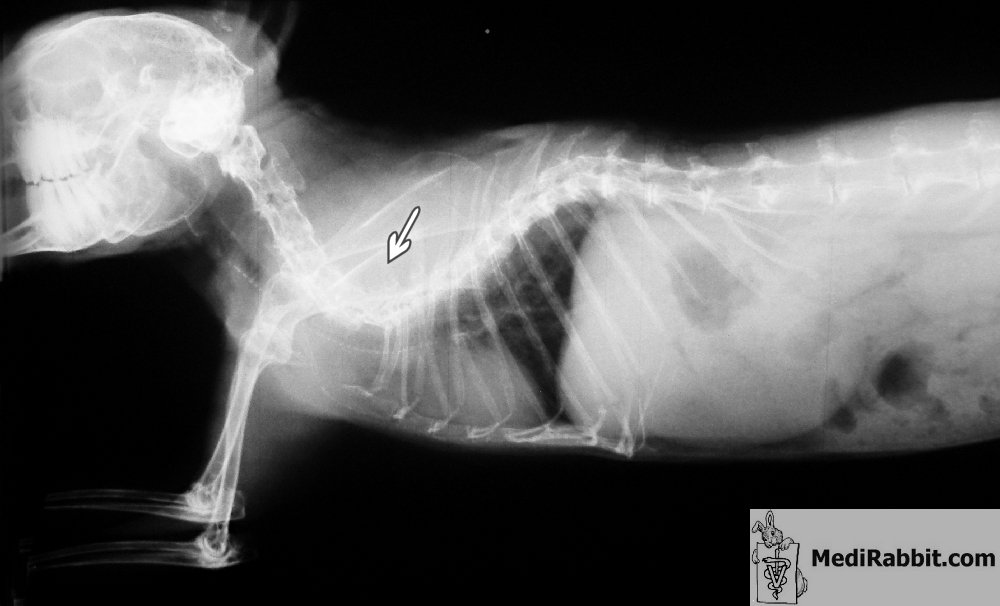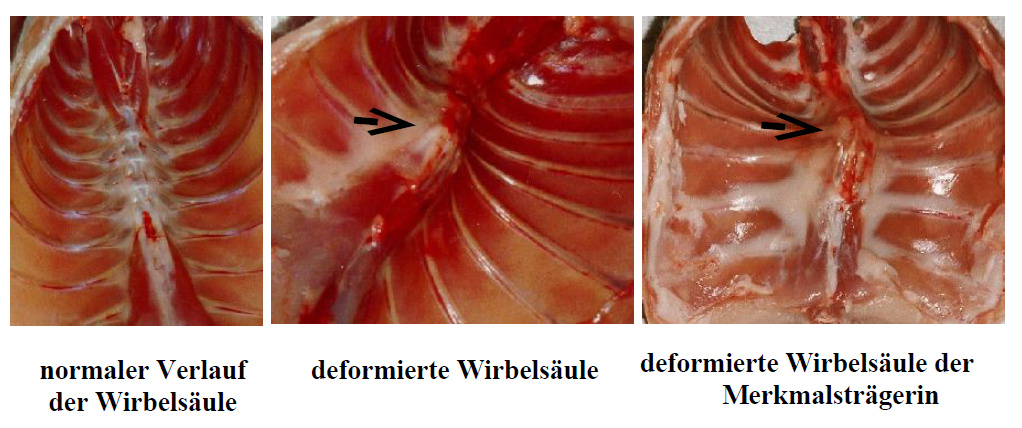Lordosis, scoliosis or kyphosis spine deformations
are observed in rabbits too
|
MediRabbit.com is
funded solely by the generosity of donors. Every
donation, no matter what the size, is appreciated and will aid in the
continuing research of medical care and health of rabbits. Thank you |
Warning: this page
contains pictures that may be distressing for some persons.
|
Various types of spinal deformity have been observed
in rabbits: - Lordosis, curvature
of a part of the spine towards the interior of the body. - Scoliosis,
lateral curvature of the spine. - Kyphosis,
atypical curvature at the thoracic level where the column forms a bulge
towards the outside of the body. The severity of deformity varies, ranging from mild
and barely visible to severe and resulting in locomotion problems. The
etiology of these congenital deformities is not well understood. There are
several potential causes for this issue, including a lack of calcium in the
food, calcium malabsorption in the intestines, lack of exercise, poor posture
due to an insufficient cage size relative to the rabbit's size, or genetic
defects. It appears that females are more susceptible to developing these
spinal deformities compared to males. It appears that this issue is related
to the body's increased demand for calcium, particularly during pregnancy and
lactation. Physical examination and palpation of the spine are
effective methods for detecting these deformities. The X-rays of the abdomen
confirm the diagnosis. Clinical signs Rabbits affected by lordosis, scoliosis, or kyphosis
may exhibit reluctance to move, groom their fur, and remain in one place.
This is related to the pain. Consequently, their appetite is diminished, and
their fur appears unkempt. In the perineal region, the accumulation of urine
can cause skin and irritation and furr fall off.
The odor of urine mixed with fecal matter can attract parasitic flies. These
flies pose a significant health risk due to their ability to lay eggs on
damaged skin, leading to a condition known as myiasis. This condition can
have a severe prognosis if not addressed promptly. In case of a a severe
deformity, the rabbit may exhibit reluctance to move and its gait may be
compromised. Treatment There is
currently no treatment available for spinal deformities in rabbits. The pain
caused by deformity or difficult gait can be alleviated by the administration
of nonsteroidal anti-inflammatory analgesics, such as meloxicam or carprofen. It is essential to cleanse and disinfect any skin
lesions caused by urine or feces. Any dirt or debris be gently removed from
the soiled fur. To protect the skin from moisture, a water-repellent cream or
Vaseline can be applied. If a secondary bacterial infection develops,
antibiotics should be administered to the rabbit. Lordosis
Pépin
by Cécile Gruhier - Belgium Pépin was
brought to the animal rescue in March, and we immediately noticed that she
was having difficulty using her hind legs. The veterinarian estimated her age
to be about four months. She dragged her front paws while her hind legs were
gathered under her belly. We took her with her friends anyway. Her condition
remained the same until September, when there was an improvement in her
mobility.
The lateral
and dorso-ventral radiographic views of Pepin
reveal a severe deformity of the spine. A rabbit with such an abnormality
often develops paresis of the lower limbs, a condition that worsens over
time. The degeneration of vertebral discs (spondyloarthropathy) contributes
to the challenging process. The rabbit will experience difficulties grooming
its fur and collecting its caecotropes.
Dr Maassen, cabinet Grodisiabois,
Liège (Belgique) Rabbit
suffering from thoracic lordosis, a deformation of the spine towards the
inside of the body, accompanied by paresis of the posterior limbs. In September, calcium crystals appeared in the urine. Despite treatment, a change in diet, and daily washes, her condition
did not improve. Despite regular follow-ups, her condition did not improve,
and her hind legs gradually began to fail, causing her to fall regularly.
However, she ate well and played again, with highs and lows, so we remained
hopeful. In February, her condition deteriorated catastrophically in less than
two weeks. Washing her seemed like torture, so we decided to put her down. Scoliosis : Suzi
The curvature
of the spine can vary in severity among rabbits. This deformation is under
the control of several genes, which can be inherited by newborn rabbits.
Therefore, it is not advisable to utilize rabbits that have been affected by
this issue for breeding and reproduction purposes.
Lateral view of the spine
deformity:
The dorsal-ventral radiograph
of Suzi shows a severe lateral deviation of the spine in the thoracic region:
Kim
Chilson – Dr. B. Langhofer (The Scottsdale Veterinary Clinic, Scottsdale, AZ, USA) Discovery
during the autopsy of a rabbit :
Dr. Manfred Andratsch, Austria Scoliosis
of the spine in a rabbit. The lateral deviation is light, with a curvature on
the side and inward of the body of the rabbit, which was not visible on the
alive rabbit, only during the palpation of the column and following the
finger. Left: normal structure of the spine. Middle and right: abnormal curvature of the spine. Rabbit suffering from kyphosis
Dermod Malley FRCVS, Royal Veterinary College, London, UK Rabbit
with thoracic kyphosis, a curvature of the spine towards the outside of the
body causing a dorsal hump. Acknowledgements I
would like to express our gratitude to Kim Chilson (USA) and Cécile Gruhier (Belgium) for their contribution of information,
pictures, and videos documenting the severe spine deformations in their
rabbits. |
|||||||||
e-mail: info@medirabbit.com

